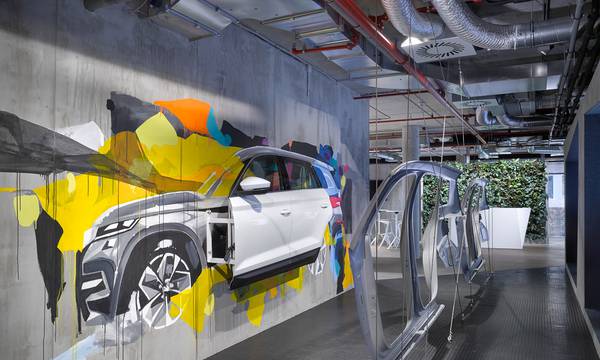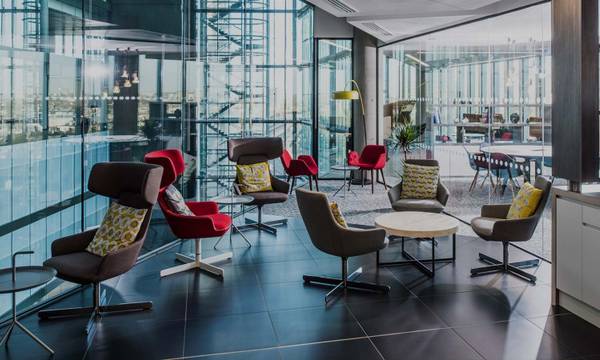When Glencore acquired Setuza, we helped the resulting new company swap out all of its IT infrastructure and prepare its employees for the change. All without interfering with the operation of the plant. Read on to find out more.
You have probably heard of acquisitions and mergers that did not turn out as expected. And there are many reasons for that. There may be problems meshing two very different business operations together; there may be issues with cultural integration. All this can have a significant impact on clients, employees, suppliers, and investors.
That’s a lot of challenges to address. Now try to imagine the situation from the CIO's perspective. He has to integrate the new company into the existing infrastructure and ensure the smoothest transition possible so the business can run as usual. His IT team are likely already overloaded handling daily tasks and have no capacity and quite possibly no experience with M&As. There’s a lot at stake and the CIO needs to bring all the key aspects of the technology and operations integration together at a time when there are still many variables and unknowns.

A new IT structure for a factory split in two
In 2011, Glencore International, one of the world's largest players in commodity trading, bought several companies from the former Czech chemical giant Setuza, a manufacturer of edible oils and raw materials.
Once a large company, Setuza was at that time was controlled by a number of entrepreneurs, burdened with debts, and who in 2006 were struggling to keep the company afloat.
The acquisition was a breath of fresh air for Setuza, but its complex history had an impact not only on the acquisition process but significantly influenced the integration of its technology as well. The factory was physically split, the buildings and land had different owners, with very complex relationships.
Welcome to Babylon
Our work with Glencore brought us to Northern Bohemia to build a completely new IT infrastructure in their acquired company. From the beginning, we had to deal with complexities and sensitivities and had to adapt our approach accordingly.
Several things complicated the situation from an IT perspective. The acquisition included a factory but not an office. Our first task, therefore, was to temporarily network the portacabins to ensure normal operation.
Much more challenging was that the IT department was not part of the transaction. The employees would keep their current roles for one month, then they would be terminated. The various departments were also housed in different buildings in an area that did not belong to Glencore. A key part of our scope was to fully understand the specific aspects of the manufacturing plant, such as the time & attendance card system, truck scales, and the strict safety regulations that apply to the chemical industry.
Between a rock and a hard place
Glencore is a global organisation and as such has departments and external collaboration companies located around the world. From the start this project had been all about working in an international environment; many languages, cultures, but also customs and different approaches to dealing with things.
The Glencore local acquisition management team in the Czech Republic was made up of the French arm of the company, the Dutch and Hungarian IT departments as well as the SAP integrator. Our challenge was to manage all the differences, especially the organisation ones, and to ensure the smooth collaboration of all parties whilst keeping the factory operating 24/7.
With so many parties and languages and cultures involved even an ordinary task can take forever and projects can be majorly delayed. At Dworkin, we don’t get bogged down by excuses or reasons as to why something has gone wrong, instead we come up with solutions to keep things moving forward.

All risk factors at once
There was a point when the M&A process started to stall because of a problem with the negotiations. This, of course, had a direct impact on IT in this physically split factory. There was a risk that part of the factory would remain without Internet connection. To ensure continued operation, we set up a satellite connection so that the employees could continue to work.
It was the night before Christmas
In order to minimise interference to everyday operations and mitigate potential security and data loss risks, we decided to swap out the full IT infrastructure between Christmas and New Year.
We set ourselves an ambitious plan - to finish the work in 4 days, keeping two days in reserve. On January 1st, both companies would act as a single entity.
We had four days to transfer almost everything as quickly as we possibly could:
- Replace the fiber optic cables
- Migrate Exchange mailservers to Lotus Domino environment
- Convert users to Windows domain
- Deploy SAP and Lotus Notes
New computer after lunch

We helped 150 users in total. We swapped out old hardware for new, and as part of that every employee received a new computer set up with their accounts and software on their desk.. Everything was done over each person’s lunch break. If they used webmail before lunch, they returned to find their account set up and live in Lotus Notes. And in parallel we installed all the other computers. Some of these PCs were used by up to 5 users because of the shift working in place - that made things particularly interesting!
We’d already delivered 20 computers to their Lab and had tested all of the software and applications they use including SAP. We then created all the user accounts in AD. Then 2 weeks before Christmas we gave each user 2 two hour training sessions covering WinXP to Win7, Lotus Notes and and any other changes that would affect their working life.
It was all done over those four days between Christmas and New Year; we used the two reserve days to carry out some tweaks; ensuring that printers were set up correctly for each user - that was a real challenge! We worked across three shifts and yes - some of our people didn’t sleep for a few days. But that’s what we are all about - we simply never say die until the job is done.
Our recommendation: Look after your staff and communicate effectively
Every merger is different, but it is true that change always carries the potential for problems. And it’s the end users in particular who are most affected by mistakes.
But in this case, thanks to good communication, the employees were completely on board with the changes. There is no doubt that they played a major role in the project’s success. They came to work in between the Bank Holidays and focused on the new IT agenda rather than their routine tasks.
Our recipe for success
1.
Find the fairy godmother or godfather
Our first step was to find out who knew most about how the company worked and who the staff looked up to and went to for advice. Quite often it’s a local, long-term employee, maybe a local close to retirement rather than an outsider.
2.
Establish a command centre and lab
We took over a room in the building and moved the new computers in. We gradually loaded the necessary applications and adjusted the settings with each user so that they ended up with a tested, ready to go computer.
3.
Employ a “Ringfenced” data policy
We moved all the old data to a server with read-only access so nobody could change it.
And today?
Several years have passed since the acquisition, so we can now look back and evaluate how it all went.
We are pleased that the former Setuza company now under the Glencore brand is once again one of the most successful companies in the region, actively participating in the development of the region,and safeguarding its hundred and sixty-years plus oil heritage.
We continue to provide IT support services to Glencore and are happy to be part of their success.



